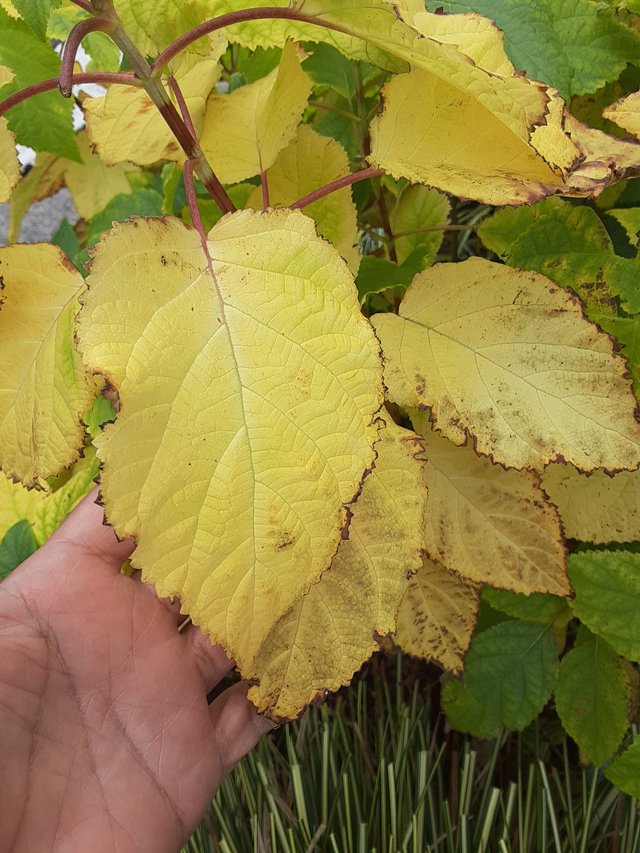
Hydrangea arborescens, commonly known as the smooth hydrangea, offers a stunning transformation in autumn, particularly with its leaves. Here's what you might be interested in:
Autumn Foliage:
- Hydrangea arborescens leaves undergo a vibrant metamorphosis come fall.
- Green hues gradually surrender to warm tones of yellow, orange, and russet, creating a fiery spectacle.
- Some cultivars, like ‘Annabelle’ and ‘Incrediball’, boast striking shades of rich purple and red that add drama to the autumnal landscape.
- The specific colors can be quite variable, depending on factors like sunlight exposure, temperature fluctuations, and even genetic variations within the species.
Leaf characteristics:
- Hydrangea arborescens leaves are typically lobed, resembling miniature maple leaves.
- They boast a textured surface with vein patterns that become more pronounced as the green fades.
- As autumn progresses, the leaves eventually drop, revealing the plant's distinctive peeling bark, adding another layer of visual interest.
Overall Effect:
- The vibrant autumn foliage of Hydrangea arborescens makes it a popular choice for landscaping, adding a touch of warmth and drama to gardens and other outdoor spaces.
- It provides a beautiful transition alongside other fall foliage favorites like maples and oaks.
- Even after the leaves drop, the textured bark continues to provide visual appeal throughout the winter months.
Additional Notes:
- Hydrangea arborescens is relatively low-maintenance and adapts well to various soil conditions, making it a versatile choice for gardeners.
- Beyond its foliage, Hydrangea arborescens also offers clusters of creamy white flowers in early summer, attracting pollinators like bees and butterflies.
Ref.:
 |  |
Upvoted! Thank you for supporting witness @jswit.
Downvoting a post can decrease pending rewards and make it less visible. Common reasons:
Submit